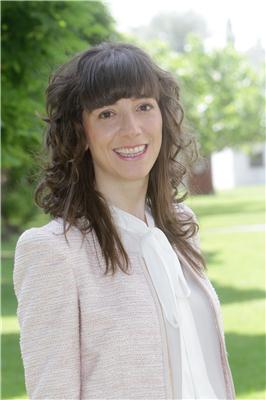G.P. Thomas
Montserrat Fernández-Vallejo, a graduate and telecommunications engineer from the UPNA-Public University of Navarre, has experimentally built a variety of fiber-optic sensor networks equipped with a multiplexing capability to remotely monitor large structures.

Montserrat Fernández Vallejo, UPNA
Fernández-Vallejo developed the fiber-optic sensor networks as part of her PhD thesis titled ‘Contribution to the Development of Optical Networks for Fiber Optics Sensors Using Fiber Lasers.’ Manuel López-Amo Sainz, a professor at the Department of Electric and Electronic Engineering of the UPNA-Public University of Navarre, has supervised the thesis, which received a cum laude distinction with European Doctorate Mention.
In her work, Fernández-Vallejo focused on three major issues faced by optic sensor networks, namely multiplexing sensors in a single network, providing uninterrupted service in the occurrence of a potential malfunction in the network, and enabling remote monitoring.
Fernández-Vallejo was also able to develop a 250-km multiplexing fiber-optic sensor network, the longest hitherto in existence.
Fernández-Vallejo explained that multiplexing enables the sharing of the same transmission medium to transmit data sent by different sources as well as allows the sharing of the receiver and the transmitter. In remote fiber-optic networks, the transmission medium is the fiber itself, which transmits the information coming from the sensors, while the main hub handles all the information received.
Fiber-optic sensor networks can be used to monitor structures that are very expensive like high voltage lines and oil pipelines, as well as in areas where there is a chance of human loss such as dams, bridges, chemical product warehouses, nuclear plants, and much more. They can also be utilized to monitor a perimeter.
Disclaimer: The views expressed here are those of the author expressed in their private capacity and do not necessarily represent the views of AZoM.com Limited T/A AZoNetwork the owner and operator of this website. This disclaimer forms part of the Terms and conditions of use of this website.